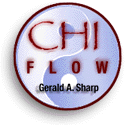Questions, Comments and Testimonials on Products
Baguazhang - Old Eight Palms
Klaus: Gerald,
Thanks for the DVDs. I practice about the same cirular form, but a little bit different and focusing more on the boxing in the partner training.
But really like your grapling and throwing techniques in your partner training (because I startetd my Kungfu-life with Aikido 1985 and did that for a long time.
Do you focus in your Bagua more on this?
Have an nice weekend,
With regard,
Klaus
P.S: the sequence at the End of BaguazhangII makes me happy :-)
Gerald Sharp: Klaus,
About the applications, when I first learned Xingyi with Jiang Hao Quan, I was exposed to boxing and striking. When he taught me the Combative Bagua form he had learned with Jiang Rong Qiao and others who had developed it at the Nanjing Kuoshu Institute in 1929, he was taught Suai Jiao. According to him, since Bagua was a "palm" style (Baguazhang) it was filled with throws and takedowns and some pins. However, it was what I will refer to as sport Suai Jiao which is mostly what we see today. As such it is practiced with a gi and is very similar to sport Judo which is very different than traditional Judo. Jiang wanted me to learn his Shaolin, and became upset when I didn't go for it.
Next, I learned some Bagua and mostly Xingyi from Deng Fu Xing who had studied with Dong Zhiying, a Kung Fu Brother of Jiang Rong Qiao. This kinship was in generation only, because their forms and style are radically different. Deng had been both a coach and a referee in San Shou and San Da, so his applications were colored by his competition and training experiences in these venues. However, he too verified that Bagua is practiced with throws and grabs, because it is a "palm" art.
When I studied Baguazhang (and Nei Jia Kungfu) with Zou Shuxian and Cheng Jie Feng their forms were very similar with each other, and their lineage very pure from Jiang Rong Qiao. Zou, Jiang's daughter, emphasizes consistent handwork and footwork without deviation. Her take is pretty simple, minimalist and literal. She follows the books, and any variations are really explorations in her mind. She likes push hands and striking with eye and groin strikes for application, as well as throws. According to her though, men were taught Suai Jiao by Jiang for Bagua application. Cheng Jie Feng was more clear on the subject and described what he referred to as "traditional" Suai Jiao. He related how Suai Jiao used to involve many ground techniques, but was abolished not long after the beginning of the 20th century. According to him, ground fighting was also called "dog fighting," was considered a threat by the imperial government, so it was outlawed.
Interestingly enough, Zhuang Yuan Ming, Liangong's creator, related a similar story. He told me that he and other students of Wang Zhiping had studied traditional Suai Jiao, or dog fighting secretly from the late '30's to 50's, as well as an internal art known as, "The Lost Track Fist." However, he no longer really practices any of that being on in years, and focusing more and more on health with each passing year of his life which began in 1919.
Of all the teachers I have studied applications with, Ma Yueh Liang (because of his softness and resiliency) and Cheng Jie Feng reign the most supreme in my mind. They were (and are) kind-hearted, always available, and loved to practice and teach. Cheng, because he was young, is someone you could roll around in the mud with. Ma, although young at heart even in his nineties, had such illustrious push hands skill that I believe he never really knew what mud was. To him, going to the ground was something that happened to other people. It seemed to me that the actual experience of ending up in the mud was some sort of fiction for Ma Yueh Liang because of his incredible level of skill.
Cheng Jie Feng is elusive, and hasn't been seen since he went to Sweden (at least allegedly) five years ago or so. (I would very much like to get back in contact with him.)
Of course, Master Ma passed on in 1998, and I was the last of his students to see him alive. Ma Yueh Liang passed an hour after my visit with him on Friday morning at 9:00 a.m. March 13, 1998.
Anyway, I wish you well, and if you have any more observations about the series, please send them my way.
Sincerely,
Gerald A. Sharp
P.S. For your information, the Xingyiquan series (because it's a chuan style) shows both striking and Jiang's grappling concepts. You can read more about the contents at this link:
http://www.chiflow.com/Merchant2/merchant.mv ?
Screen=PROD&Store_Code=chiflow&Product_Code=XYDVD1D&Category_Code=5 .
Xingyiquan Instructional DVDs
Alexander: hi gerald,
parcel arrived today... the new format of the disks is realy nice, and i like the extensive explanations and the application part, something i wish you will do for the wu disks in the future. (snip snip) i like your disks because they show real internal art, and i thank you to for making such material public available. (snip snip) i still use the other products i bought from you for reference, they are a great help in my studies. (snip snip)
wish you all the best and hope to hear from you soon
alexander
Gerald A. Sharp: Thanks for all your support over the years.



